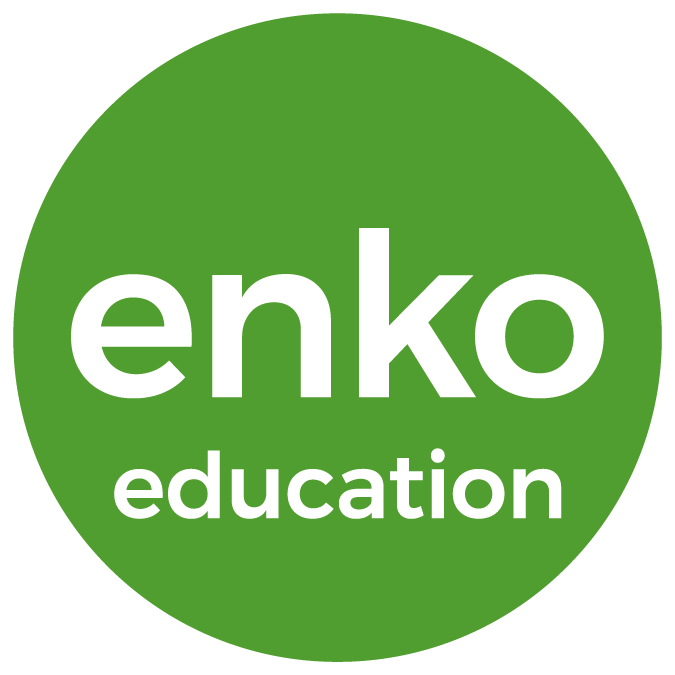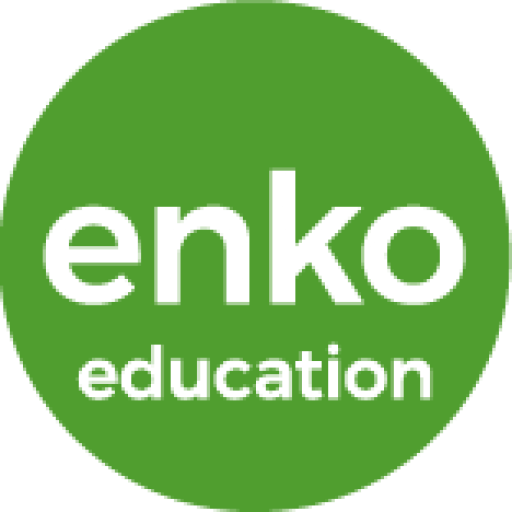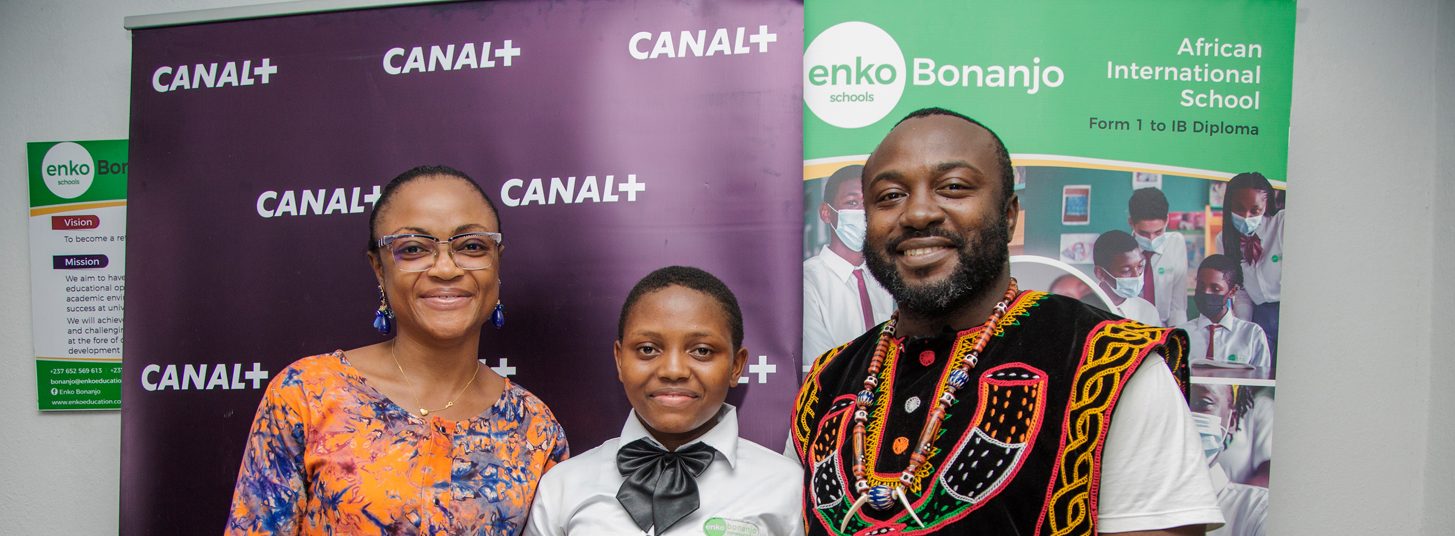Everything you need to know about bilingualism
“To learn a language is to have an extra window through which to look at the world.”
Are you a student aiming for a particular university? If so, then don’t neglect your language skills! Be aware that the most selective universities require at least two years of high school foreign language study from applicants. In addition, many colleges and universities require certifications and tests to prove students’ ability to speak one or more foreign languages.
All over the world, language learning is a fundamental part of the educational system. Learning several languages is one of the keys that will give you access to the doors of great universities, but also give you the chance to be bilingual, even multilingual!
Between intellectual development, cognitive advantages, and cultural openness, bilingualism is an undeniable asset, and not only in the academic and professional fields. Let’s discover why!
Contents :
- What is bilingualism?
- What are the advantages of being bilingual?
- Bilingual education: what, where, why, how?
- Foreign languages: learning, mastering and evaluating
What is bilingualism?
Bilingualism = living with two languages!
You are probably already familiar with this notion, but let’s do a little reminder!
Bilingualism is defined as the ability to master two languages. A speaker is bilingual when he or she has communication skills in both languages and understands them effortlessly. Bilingualism is acquired through exposure to the second language and through the various opportunities a speaker has to speak that second language.
Here are some words from Yaya Dama, an English teacher at Enko Ouaga in Burkina Faso, about bilingualism:
“Bilingualism is a good thing because it allows a person to communicate easily with others while getting closer to the culture of the second language. Whoever is talking about a language is also talking about culture and having the ability to speak two international languages such as French and English opens the door to multiple opportunities whether it be in education, work, business, etc. Don’t hesitate to give your children the opportunity to be bilingual because you will open the door to the world’s opportunities!”
Bilingualism is the ability to use two languages :
- to communicate with an interlocutor
- to express emotions
- as cognitive means (learning, reading)
- as a medium of thought (problem-solving)
- as a vehicle for creativity (poetry, humor)
- in an environment of polyculture awareness (sports, media, associations, tradition)
- spontaneously (interjections)
Did you know? Almost 60% of the world’s population speaks at least two languages!
Beware, a bilingual person does not have a perfect accent in both languages, even though he or she has a good command of them in many contexts. This is one of the many misconceptions about bilingualism.
Would you like to know if you are really bilingual? Take the test!
A little lexicon of bilingualism
The terms “bilingualism” and “bilingual” are to be compared with other notions. Here are some of them!
- Mother tongue: the first language with which a speaker has been in contact. Also called the first language.
- Second language: the second language with which a speaker has been in contact.
- Monolingual / Unilingual: a speaker who speaks only one language.
- Bilingual: a speaker who speaks two languages.
- Multilingual / Polyglot: a speaker who speaks more than two languages.
- Diglossia: cohabitation of two languages within the same society with a complementary and hierarchical distribution of their social functions.
The different types of bilingualism
It is important to know that bilingualism is acquired in different ways, at different times of life, and not only during childhood as one may often believe. There are also different types of bilingualism regarding the use of the two languages.
Acquisition of the second language
Early bilingualism
There are two types of early bilingualism: simultaneous early bilingualism and consecutive early bilingualism.
Simultaneous early bilingualism: refers to the situation of a child who learns two languages at the same time, from birth.
For example, a child born into a family with two parents who speak two different languages
Early successive bilingualism: refers to the situation of a child who has already acquired a first language in part and who then learns a second language during childhood. This case of bilingualism is also called “compound bilingualism”.
For example, a child moves with his family to another country, where the dominant language is not his mother tongue.
Late Bilingualism
Late bilingualism refers to the situation of a speaker who learns the second language after the age of 6 or 7 and particularly in adolescence or adulthood.
Late bilingualism is consecutive bilingualism that occurs after the acquisition of the first language (after the language development during childhood). With the first language already acquired, the late bilingual uses his/her experience to learn the second language.
For example, a teenager moving with his family to another country where the language is spoken is not his mother tongue; an adult learning a foreign language through language courses.
Use of both languages
Additive bilingualism
The term “additive bilingualism” refers to the situation where a person has acquired both languages in a balanced way. This is strong bilingualism.
For example, a speaker who uses both French and English in his/her daily life.
Subtractive bilingualism
Subtractive bilingualism refers to the situation where a person learns a second language at the expense of the first language, especially if the first language is a minority language. In this case, fluency in the first language decreases, while fluency in the other language increases.
For example, a speaker whose mother tongue is French but who has very few opportunities to speak it, being in an English-speaking country with a mainly English-speaking environment.
Passive bilingualism
Passive bilingualism refers to the ability to understand a second language without being able to speak it.
For example, a French speaker with limited English comprehension.
Bilingualism in Africa
Bilingualism can occur in situations where an entire community speaks several languages at once, in several spheres (media, education, literature, daily life), as is the case in officially bilingual and multilingual states. Many African countries are in a situation of diglossia: the different languages spoken in the countries – European languages and local languages – do not have the same status. Diglossia is one of the consequences of colonization.
Did you know? Africa is the continent with the most bilingual states. In total, 24 African countries are legally bilingual, with nearly 400 million people counted in 2019.
Which are the bilingual and multilingual countries in Africa? Here are a few:
South Africa: the largest number of official languages.
South Africa has 11 official languages! For centuries, the official languages of South Africa were European – Dutch, English, and Afrikaans. African languages, spoken by at least 80% of the population, were ignored. In 1996, South Africa’s new constitution gave official protection to all major languages.
As a result, South Africa has a population fluent in at least two languages. The four most spoken languages in South Africa are Zulu, Xhosa, Afrikaans, and English.
Nigeria: the most languages
Nigeria is the country with the most languages spoken on the African continent. With as many as 525 languages, it is the third most multilingual country in the world, ahead of Papua New Guinea and Indonesia.
English is the most widely spoken language in urban areas, while in more remote areas of the country, indigenous languages are dominant. The native languages in Nigeria with the most speakers are Hausa, Yoruba, and Igbo.
Cameroon: the only country with two official languages
Cameroon is the only country in Africa with two official European languages: French and English. This is a legacy of the country’s colonial past as a French and British colony from 1916 to 1960. Eight of Cameroon’s ten regions are French-speaking and the other two regions are English-speaking.
What are the advantages of being bilingual?

In addition to being able to watch movies in OV without subtitles or to make friends from all over the world, bilingualism has cognitive, social, and cultural advantages that we are not always aware of!
Cultural openness
If you use more than one language in your daily life, then you are probably more culturally aware than a monolingual person. Being bilingual allows for a better understanding and appreciation of the different cultures that exist in our society.
Personality
Being bilingual has an impact on your personality and the way you perceive things! Bilingual children turn out to be more empathetic and tolerant people, according to the Concordia University study, “Bilingualism in the Early Years – What the Science Says,” by Krista Byers-Heinlein. This 2013 study of a group of children found that monolinguals were more likely to think everything was innate, while bilinguals were more likely to think everything was learned.
Bilingual children, especially those who learn another language in the preschool years, are more likely to understand that it is what one learns, rather than what one is born with, that constitutes a person’s psychological attributes.
Language Skills
Mastering multiple languages gives you more vocabulary, better knowledge of grammar, and better recognition of sounds and visual signs. This leads to better writing and speaking skills. Bilinguals are also better able to develop metalinguistic awareness.
Cognitive qualities
Among cognitive qualities, bilinguals have better comprehension and communication skills. They are known to be more sensitive and responsive to communicative expectations.
According to Samantha Fan, a doctor of psychology at the University of Chicago, being exposed to multiple languages provides a very different social experience, which helps children develop more effective communication skills. On the other hand, researchers have found that children from multilingual environments are better at interpreting a speaker’s meaning than children who are only exposed to their native language.
In addition to comprehension and communication skills, bilinguals have other cognitive advantages in several areas such as creativity, multitasking, reasoning, efficiency, memory, and concentration. Click here to discover them!
Health Benefits
If you have ever experienced speaking a language other than your mother tongue – like the vast majority of the population – you know that it requires a special effort and demand on the brain!
The cognitive benefits of bilingualism lead to health benefits, as knowing more than one language improves mental flexibility. Speaking more than one language, in the long term, delays cognitive decline and reduces the risk of Alzheimer’s disease and dementia in adults.
Academic success
Are you a bilingual student? Science proves that you have what it takes to be a better student!
Bilingual students develop strong analytical and critical thinking skills at an early age, are able to focus more intensely and for longer periods of time, and can move more efficiently from one task to the next.
On the other hand, becoming bilingual at a young age increases vocabulary, knowledge of grammar, and recognition of sounds and visual cues. This leads to better writing and speaking skills.
Bilingual students develop flexible problem-solving skills that strengthen their math and science skills.
Career Success
Being bilingual offers advantages in the job market. Bilingual job seekers are generally highly sought after and have access to more positions than monolingual speakers. Naturally, bilinguals are less affected by unemployment.
Bilinguals have more professional opportunities. Many fields require the mastery of a second language: journalism, education, tourism, marketing, and communication, among others. Another advantage is the possibility of mobility: bilingual employees are more likely to move abroad if they wish. On the other hand, it has been shown that bilinguals are better paid than their monolingual counterparts. In Canada, one study showed that the language pay gap could be as much as 20%.
Learning other languages
If you know one foreign language, it helps you learn others.
“Languages don’t work like communicating vessels. Languages are never in competition. The more you learn, the easier it is to learn new languages. There is a cumulative effect. Learning one language does not hinder the learning of another; it’s just the opposite.” says Gilbert Dalgalian linguist, former educational director at the Alliance Française in Paris, a specialist in early bilingualism.
In the same idea, the Common European Framework of Reference for Languages distinguishes the notions of “multilingualism” and “plurilingualism”. While multilingualism concerns “the knowledge of a number of languages, or the coexistence of different languages in a given society”, the CEFR defines plurilingualism as “a communicative competence to which all knowledge and experience of languages contribute and in which languages are interrelated and interact. […] as the speaker’s language experience expands.”
Bilingual education: what, where, why, how?
What is bilingual education?
Bilingual education is the teaching and learning of academic content in two languages: in the first language and in the second language. The characteristic of this type of education is the presence of a second language in non-linguistic subjects in the curriculum, in part or in its entirety. Bilingual education is opposed to monolingual education in that it allows for immersion in intercultural communication with the second language as the medium of learning and not merely as an object of study.
There are several models of bilingual education depending on the objective established, the most common being the additive and subtractive models. In bilingual education programs, both languages are equally recognized and valued, they are taught and learned systematically throughout school, and the goal for learners is the development of literacy and communication in both languages.
What are the benefits of bilingual education?
Bilingual education allows students to develop comprehensive second language skills in listening, speaking, reading, and writing. Ideally, students will be able to use their second language to interact with others, excel in their studies, and enhance their opportunities to study, live, and work in different parts of the world. Bilingual learning not only helps students master and apply both languages, but also improves their understanding of each culture.
There are many bilingual schools on the African continent. However, what is the characteristics of a good bilingual school? How can we be sure of the quality of a bilingual school?
Perhaps add a transitional sentence here to introduce Enko Education, e.g.: Choosing the right school can be crucial for learning a foreign language. More and more schools claim to be bilingual, how can you be sure of the quality of bilingual education?
Enko Education and bilingualism
Enko Education is a network of schools present on the African continent in nine countries and 13 primary and secondary schools. One of Enko Education’s primary missions is to provide its students with a quality education to enable them to access the world’s most prestigious universities. With bilingual education and native language teachers, Enko Education’s mission is to make its students independent speakers abroad, especially in English-speaking countries.
Enko Bilingual Schools
Enko Waca is one of two schools located in Dakar, Senegal. It is a primary and secondary school that offers IB and bilingual education to students. Based on progressive bilingualism, Enko Waca aims to integrate six to eight hours of English per week, in non-linguistic subjects such as math, art, and sports.
Enko Botho is one of the Enko Education schools, which is located in Gaborone, Botswana. Students not only learn English, but the teaching also promotes the learning of a local language.
Our International Diplomas
The IB (International Baccalaureate)
The International Baccalaureate (IB) Diploma Program offered by Enko Education schools is an intensive program for primary and secondary school students. It is a curriculum that consists of four educational programs, offered in schools around the world to children between the ages of 3 and 19. It offers students the opportunity to study abroad at the world’s best universities.
IB students develop strong academic, social, and emotional characteristics. They are also likely to perform well academically, often better than students in other programs.
The International Baccalaureate enables students to develop their bilingualism so that they can study with confidence in diverse environments and develop skills that are recognized abroad.

The Cambridge Assessment
The Cambridge Assessment is the second type of international qualification that Enko Education schools offer to its students. The program includes examinations in General English, Professional English, Academic English, English for Children, and Teaching Qualifications.
The Cambridge English exams test the four language skills of writing, reading, listening and speaking. They are based on the Common European Framework of Reference for Languages (CEFR), ensuring international comparability of exam results. The exams are taken by more than four million candidates in over 130 countries each year and are recognized by 13,500 universities, institutions, and companies worldwide.
Find out more about Cambridge Assessment.
Foreign languages: learning, mastering and evaluating
Ways to learn a language
Do you want to learn a foreign language or improve your skills? We present you the different ways to learn a language, with their positive and negative points!
1. Total immersion
Total language immersion is often considered the best way to learn a language, as it is the most natural method. It is the way we learn our native language as children: we are immersed in a world where everyone speaks the target language exclusively and we learn by exposure to the language, by listening and observing. Language stays are a great way to learn a language while immersing yourself in the country and culture. Learn more about language stays.
The +: Immersion in the target language country gives you access to the most authentic version of the language. Learning is generally fast and efficient, you learn the language in context and continuously. Interactions with native speakers allow you to develop your communication skills.
The -: Total immersion implies making a lot of mistakes, so you should not be afraid to speak without making mistakes. Also be aware that this is the most tiring method: communicating in a language that you do not fully master requires constant mental effort.
2. Language courses
Language learning through teacher-led courses is the most common, as these are the courses that are present in school and university settings. Language courses are based on the study of the culture and grammar of the target language. They are designed to give learners all the keys to form grammatically correct statements.
Perhaps you don’t have time to travel? Then online courses are for you! Many sites offer online language courses with native speakers, such as Lingoda. There are also more and more platforms that promote the learning of African languages such as Luga or Les langues d’Afrique.
The +: The study of metalanguage* during the courses allows you to have an overview of the grammar and the functioning of the language. You will know what you are getting into and gain confidence before confronting communicative situations with native speakers.
The -: In the classroom, communicative opportunities may be few and far between, especially if the number of students does not allow for full participation. Also, if you are not in the country of the target language, contact with the language is limited to the classroom.
*Meta-language: refers to the language used to describe language, such as most grammatical terms learned in the language class, e.g. “irregular verb”, “object complement”, “adjective”, “near future” etc.
3. Self-learning
Self-learning refers to a situation in which learners teach themselves independently. You don’t have the time or the means to offer yourself one of the two options mentioned above? Would you like to supplement your language courses? Strengthen your language skills? There’s nothing to stop you from doing it yourself! But you don’t know where to start? Here are some ideas!
- Language applications and websites
Your smartphone and computer are at your fingertips, so are languages! Online language learning is very common today. Language apps and self-study websites offer state-of-the-art learning practices, with audio and video materials and the ability to test yourself through games and quizzes among other things. You can choose from a variety of courses on different topics that match your level and what you want to learn. Learn at your own pace by choosing the amount of time you want to devote to learning the language on a daily or weekly basis.
There are hundreds of platforms for learning a language online. Not sure which one to choose? Here are some suggestions:
- Babbel: website and application offering mostly European languages such as English, German, Dutch, and others.
- Afrilangues: website and application to learn African languages such as Bambara, Pulaar, or Lingala. 13 languages are available on the site!
- QIOZ: website allowing students to learn French, English, Spanish, Portuguese and Chinese with videos, movies, and games. Possibility to evaluate your level by taking a placement test.
- Live Lingua Project: site offering language methods, e-books, and audio documents for more than 130 languages and dialects from around the world, including African languages.
- Memrise: site and application to learn European languages and others like Yoruba, Korean or Chinese. Possibility to learn vocabulary in an entertaining way with quizzes and a card system!
- Ba Ba Dum: the site allows you to learn vocabulary in 21 languages (European languages + Chinese, Arabic, Esperanto, and Japanese) around 5 different games.
- Language methods
Language methods are designed for learners of all levels! Be sure to choose the type of method that suits you. Here are some of them:
- Communicative methods: this type of method is based on the principles of the CEFR, which are those of a so-called “actional” approach, and guarantees the acquisition of linguistic, socio-cultural, and communicative objectives.
- Grammar methods: these methods focus on the acquisition of grammar rules, proposing an in-depth study of the functioning of the language. These manuals are generally built on the double-page model with a page dedicated to the course and a page dedicated to exercises.
- Intuitive methods: these are methods whose learning is based on the principle of intuitive assimilation. The Assimil method is an example: it allows you to learn a language in a natural way. The learning process is based on two phases: an active phase and a passive phase. The passive phase allows the learner to assimilate the language through written and oral comprehension; the active phase solicits the learner’s ability to express himself in the target language.
- Everyday learning
Language immersion does not necessarily require a trip to the other side of the world. There are many ways to learn and improve your language skills on a daily basis, both in terms of comprehension and vocabulary acquisition.
- The media: Watch movies and series in their original version to improve your oral comprehension. You can also listen to radio and podcasts in the language you want to learn! The globally accessible platform Netflix, for example, allows you to choose the language of your movie and the subtitles, a good way to learn while having fun!
- Reading: Read regularly in the target language. This is a good way to reinforce written comprehension while enriching your vocabulary. You can start by reading the news or your favorite book in the original language of the author, for example.
- Writing: Mastering a language is not only about speaking it, it’s also about writing it! Don’t hesitate to go on blogs and forums to discuss with native speakers of the target language to practice your writing skills!
The +: Although self-learning methods are not totally free, they allow you to manage your budget as you wish and to go at your own pace.
The -: No teacher, no classes, no homework, no obligations. You are autonomous and this can eventually lead to dropping out, for the less rigorous people. Try to stay motivated by setting goals!
The Common European Framework of Reference for languages (CEFR)
The Common European Framework of Reference for languages (Learning, Teaching, Assessment), most often abbreviated by the letters CEFR, is a document published by the Council of Europe in 2001. Its purpose is to define linguistic competence in an objective manner. It constitutes a “common basis for the development of modern language programs, reference systems, examinations, textbooks, etc.”
The CEFR defines it as the main objective for the learner of a foreign language to communicate and, more broadly, to act in this language in the various domains of social life (public domain, personal domain, educational domain, and/or professional domain).
It should be noted that the CEFR is no longer specifically European since it is used as a reference in many countries around the world.
The CEFR levels
If you have never heard of the CEFR before, you probably already know the levels of the language defined in it. These are the following levels: A1, A2, B1, B2, C1, and C2, which are used in most language courses around the world.
The CEFR has established these six levels, each of which corresponds to specific competencies for the different language activities: written production, oral production, written comprehension, oral comprehension, and oral interaction.

LANGUAGE LEVELS ACCORDING TO THE COMMON EUROPEAN FRAMEWORK OF REFERENCE FOR LANGUAGES
The CEFR levels help clarify learning objectives, ensure progression, facilitate comparison in different situations and systems, help define objectives and provide a tool for evaluation.
Here is the global scale of competency levels for each of the six CEFR levels. To learn more about the detailed competencies of the language activities of the different levels, click here!
Basic User
A1: Starter level
- Understand and use familiar everyday expressions and very basic phrases aimed at the satisfaction of concrete needs
- Be able to introduce oneself or someone else
- Be able to ask and answer questions about a person’s background.
- Communicate in a simple way if the interlocutor speaks slowly and distinctly and is cooperative
A2: Elementary level
- Can understand sentences and frequently used expressions related to areas of most immediate relevance (e.g. very basic personal and family information, shopping, work)
- Can communicate in simple and routine tasks requiring a simple and direct exchange of information on familiar and routine matters
- Can describe in simple terms his/her background, immediate environment, and matters in areas of immediate need
Independent User
B1: Intermediate level
- Can understand the main points of clear standard input on familiar matters regularly encountered in work, school, leisure, etc.
- Be autonomous in most situations encountered while traveling in an area where the target language is spoken
- Be able to produce simple and coherent speech on familiar topics and in areas of interest
- Can describe events, experiences, dreams, hopes, and ambitions and briefly give reasons and explanations for opinions and plans.
B2: Upper intermediate level
- Can understand the main ideas of complex text on both concrete and abstract topics, including technical discussions in his/her field of specialization.
- Communicate spontaneously and fluently with a native speaker
- Express himself/herself clearly and in detail on a wide range of subjects, give an opinion on a current topic and explain the advantages and disadvantages of different options
Proficient User
C1: Expert level
- Understand long and demanding texts and grasp implicit meanings
- Express him/herself spontaneously and fluently without much searching for words
- Use the language effectively and flexibly in social, professional, and academic life
- Express himself/herself clearly and in a well-structured way on complex subjects and demonstrate control of the linguistic tools of organization, articulation, and cohesion of the discourse
C2: Mastery Level
- Understand with ease virtually everything heard or read.
- Can summarize facts and arguments from a variety of oral and written sources in a coherent manner.
- Express him/herself spontaneously, very fluently, precisely, and with a clear understanding of the finer points of complex subjects.
Evaluation: placement tests vs. certifications
Language tests and certifications are used to evaluate the learner’s level of language competence. They can be taken as part of an application for admission to a university or college, a permanent immigration process, an application to acquire a new nationality, or for professional promotion or employment.
The placement test
A language placement test is an evaluation that aims to determine the level of a language used by assessing their skills and knowledge. The placement test is progressive and concerns all levels. It specifies the candidate’s level for each skill. For example, a candidate taking a placement test such as the TOEIC will have a B2 level in reading comprehension and a C1 level in listening comprehension.
The placement test has a time limit.
Some examples of placement tests: are TCF (Test de Connaissance du Français), Dialang, the self-assessment test of the European Center for Modern Languages, EV@LANG, the Cambridge English self-assessment test, TOEFL (Test of English as a Foreign Language), TOEIC (Test of English for International Communication).
Language certification
Language certification is a diploma recognized by official organizations. Like the test, certification attests to the learner’s level. However, certification assigns an overall level to the candidate. For example, a candidate taking a certification such as the DELF B2 will either obtain the diploma or not.
The certification is definitive.
Some examples of certifications: the DILF (Diplôme Initial de Langue Française), the DELF (Diplôme d’Étude en Langue Française), the DALF (Diplôme Approfondi de la Langue Française), the SELFEE Sorbonne University, the Cambridge Assessment English Certificates.

Bilingualism allows you to do more than just communicate in two languages. There are many reasons and benefits to speaking a second language. And if you want to learn a language or reinforce your knowledge, the ways and techniques to do so nowadays are diverse and varied, and especially at your fingertips thanks to the internet and the diversity of media.
The knowledge of languages is often trivialized, to the point that we forget or ignore the benefits that these skills bring to us as human beings and social beings. As the German philosopher, Ludwig Wittgenstein reminds us, “the limits of my language are the limits of my own world.” : it is through language that the human expresses himself, communicates, describes, and identifies his universe.











